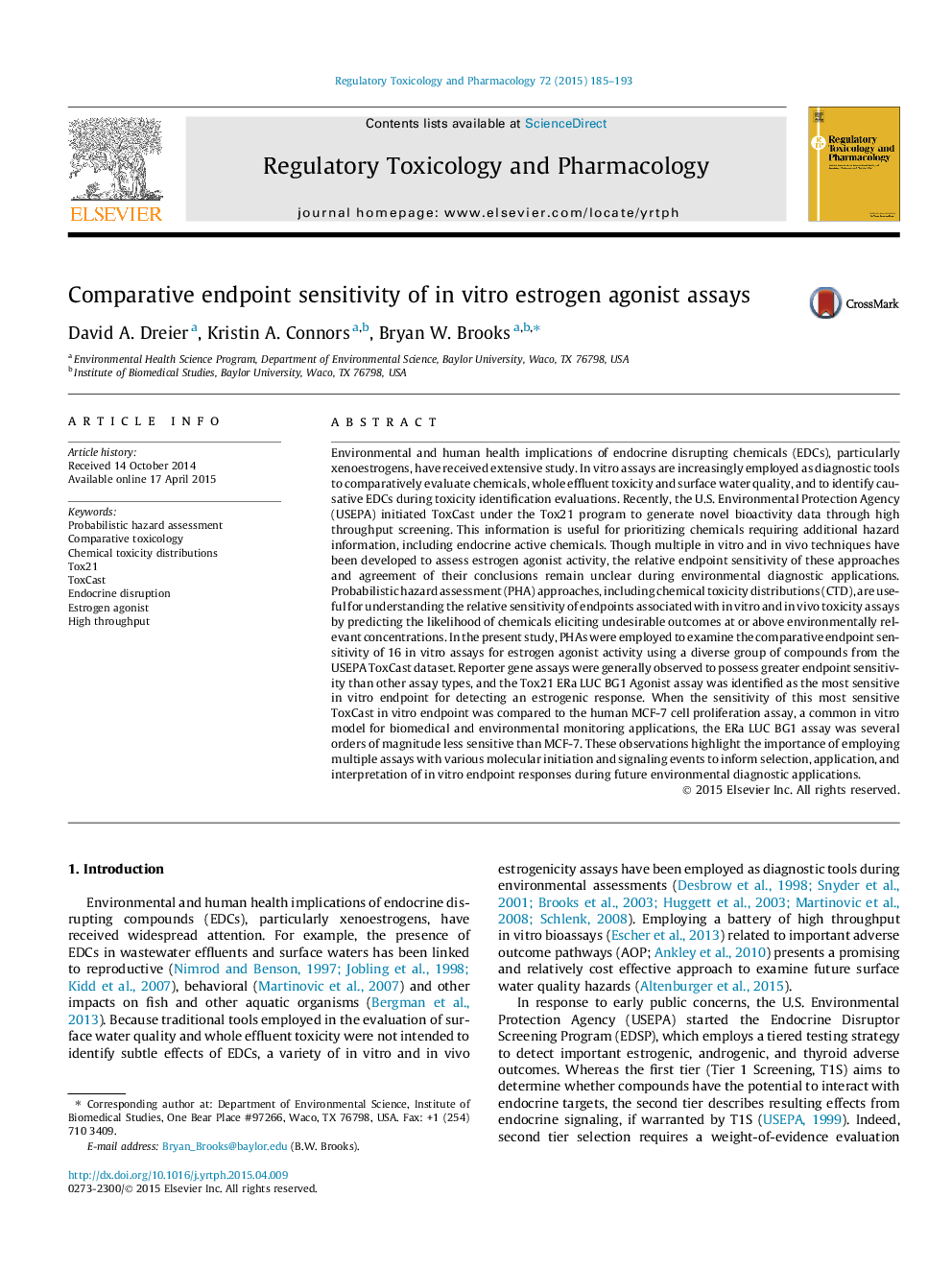| Article ID | Journal | Published Year | Pages | File Type |
|---|---|---|---|---|
| 5856713 | Regulatory Toxicology and Pharmacology | 2015 | 9 Pages |
Abstract
Environmental and human health implications of endocrine disrupting chemicals (EDCs), particularly xenoestrogens, have received extensive study. In vitro assays are increasingly employed as diagnostic tools to comparatively evaluate chemicals, whole effluent toxicity and surface water quality, and to identify causative EDCs during toxicity identification evaluations. Recently, the U.S. Environmental Protection Agency (USEPA) initiated ToxCast under the Tox21 program to generate novel bioactivity data through high throughput screening. This information is useful for prioritizing chemicals requiring additional hazard information, including endocrine active chemicals. Though multiple in vitro and in vivo techniques have been developed to assess estrogen agonist activity, the relative endpoint sensitivity of these approaches and agreement of their conclusions remain unclear during environmental diagnostic applications. Probabilistic hazard assessment (PHA) approaches, including chemical toxicity distributions (CTD), are useful for understanding the relative sensitivity of endpoints associated with in vitro and in vivo toxicity assays by predicting the likelihood of chemicals eliciting undesirable outcomes at or above environmentally relevant concentrations. In the present study, PHAs were employed to examine the comparative endpoint sensitivity of 16 in vitro assays for estrogen agonist activity using a diverse group of compounds from the USEPA ToxCast dataset. Reporter gene assays were generally observed to possess greater endpoint sensitivity than other assay types, and the Tox21 ERa LUC BG1 Agonist assay was identified as the most sensitive in vitro endpoint for detecting an estrogenic response. When the sensitivity of this most sensitive ToxCast in vitro endpoint was compared to the human MCF-7 cell proliferation assay, a common in vitro model for biomedical and environmental monitoring applications, the ERa LUC BG1 assay was several orders of magnitude less sensitive than MCF-7. These observations highlight the importance of employing multiple assays with various molecular initiation and signaling events to inform selection, application, and interpretation of in vitro endpoint responses during future environmental diagnostic applications.
Related Topics
Life Sciences
Environmental Science
Health, Toxicology and Mutagenesis
Authors
David A. Dreier, Kristin A. Connors, Bryan W. Brooks,
